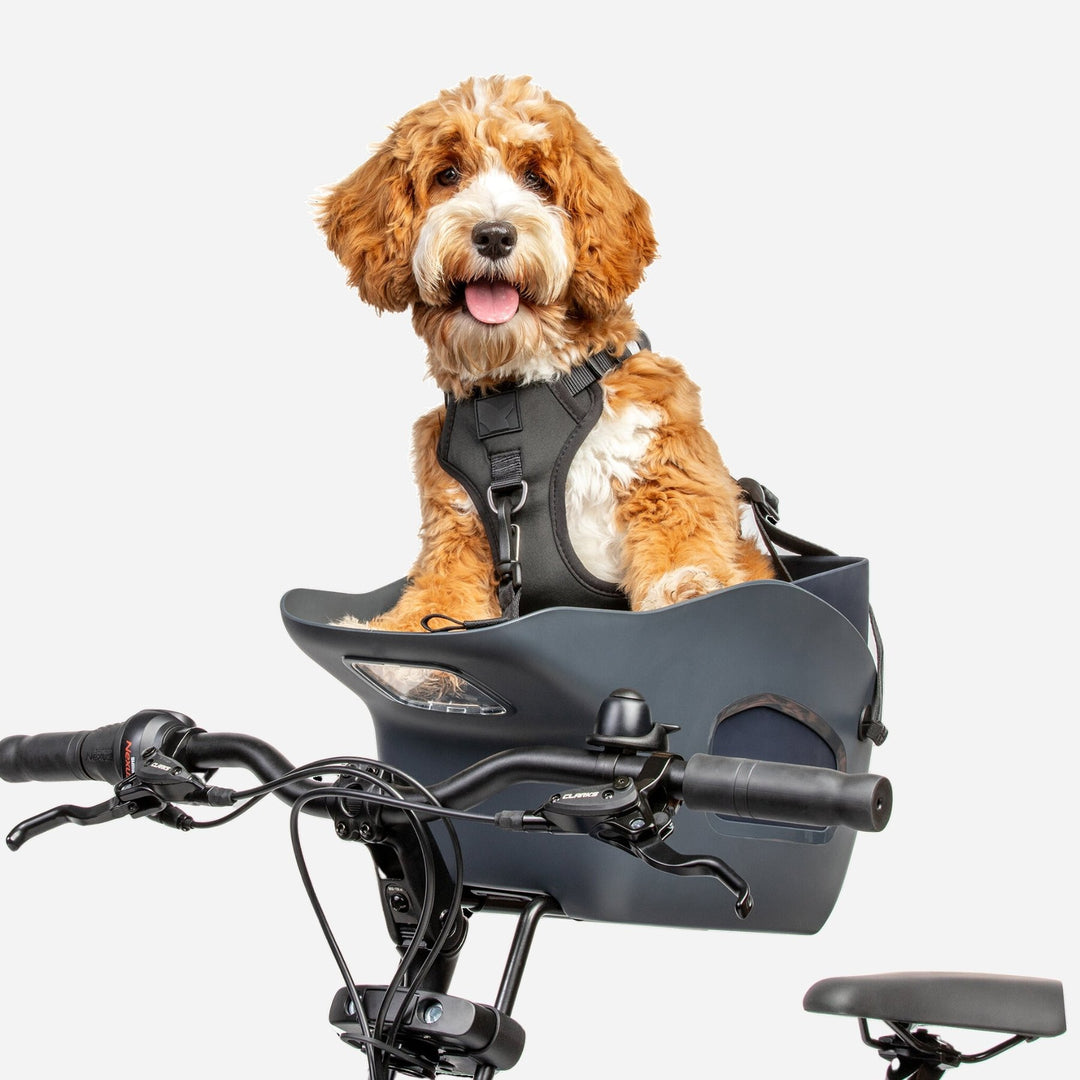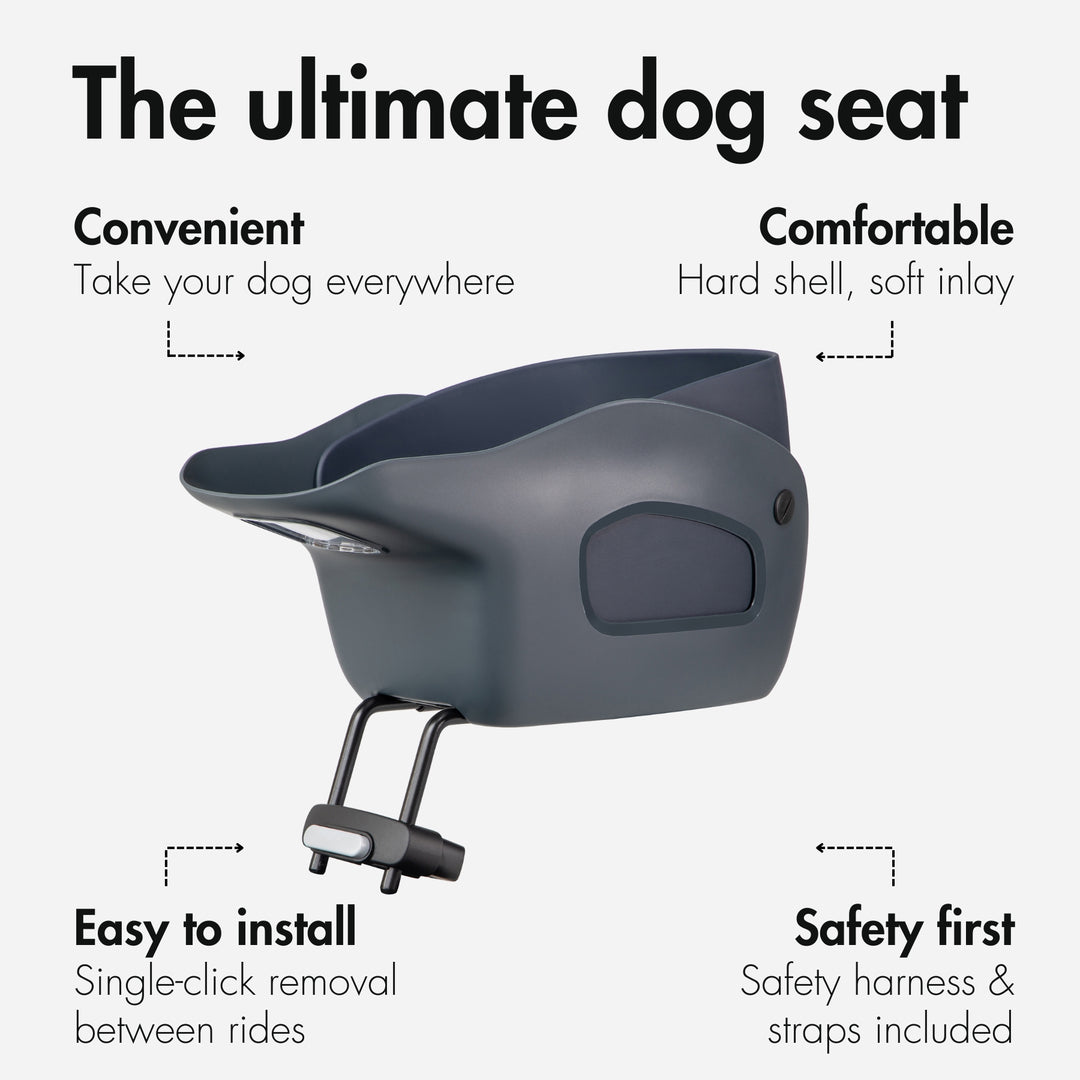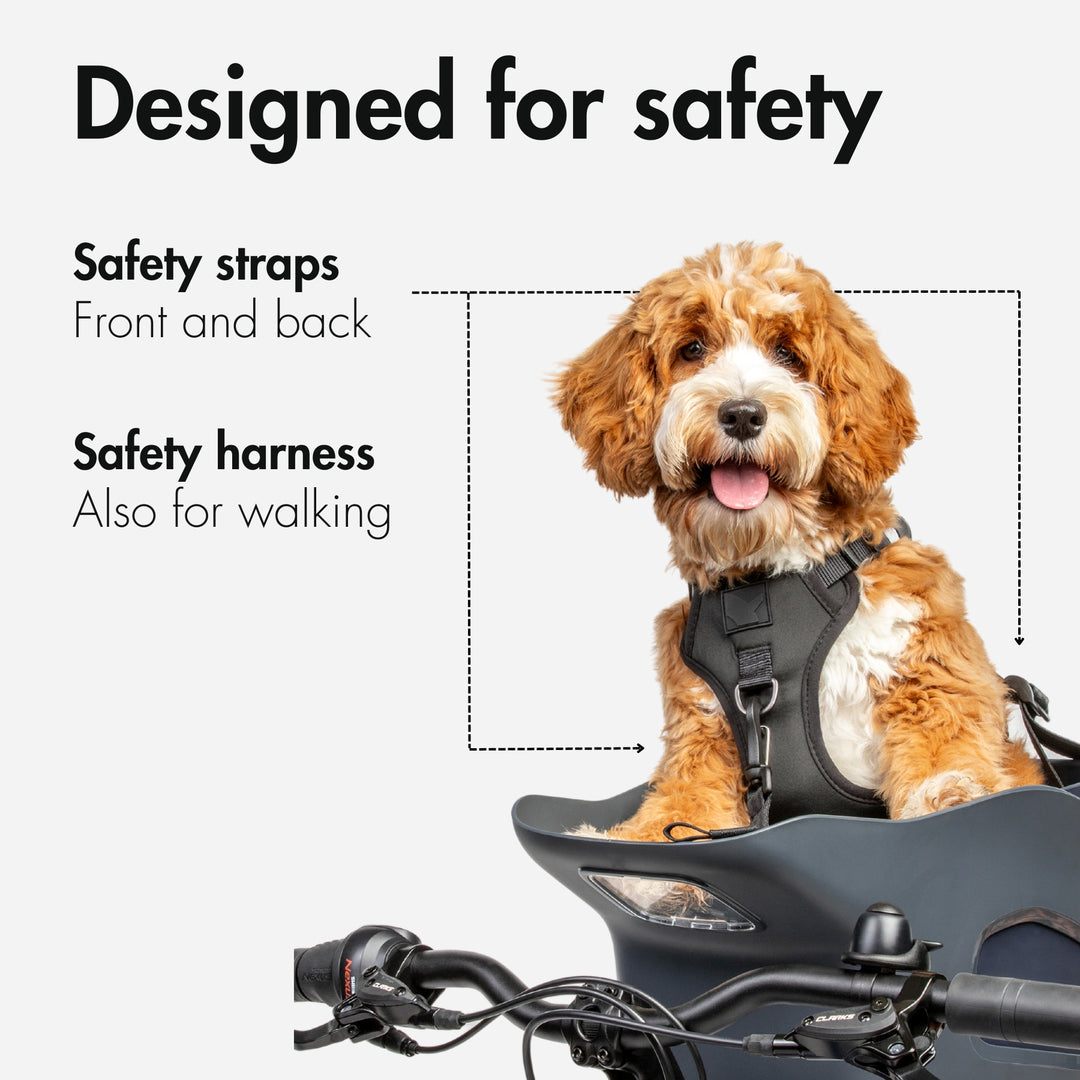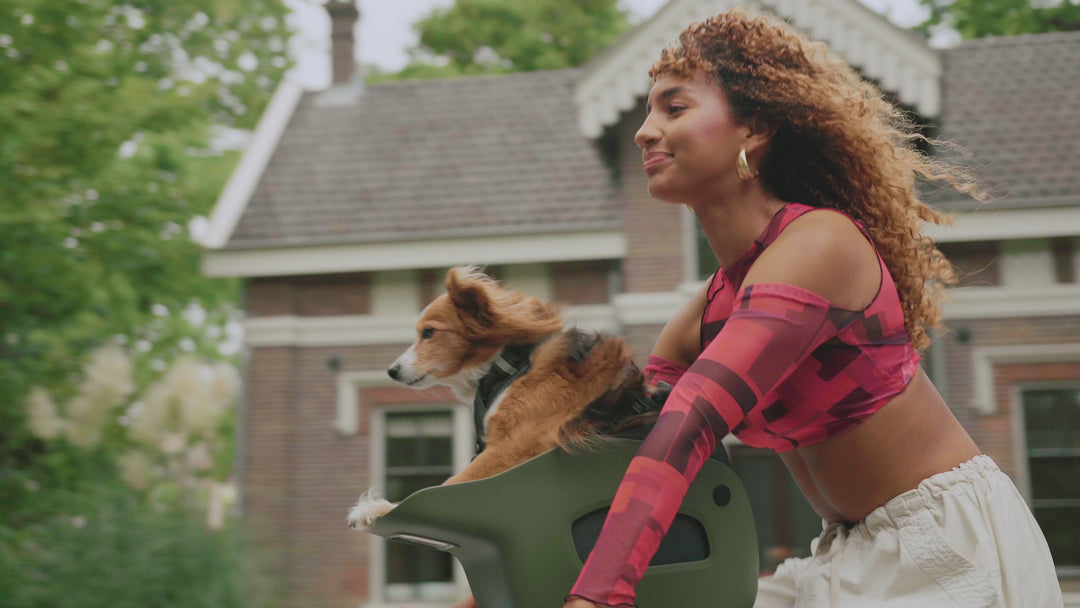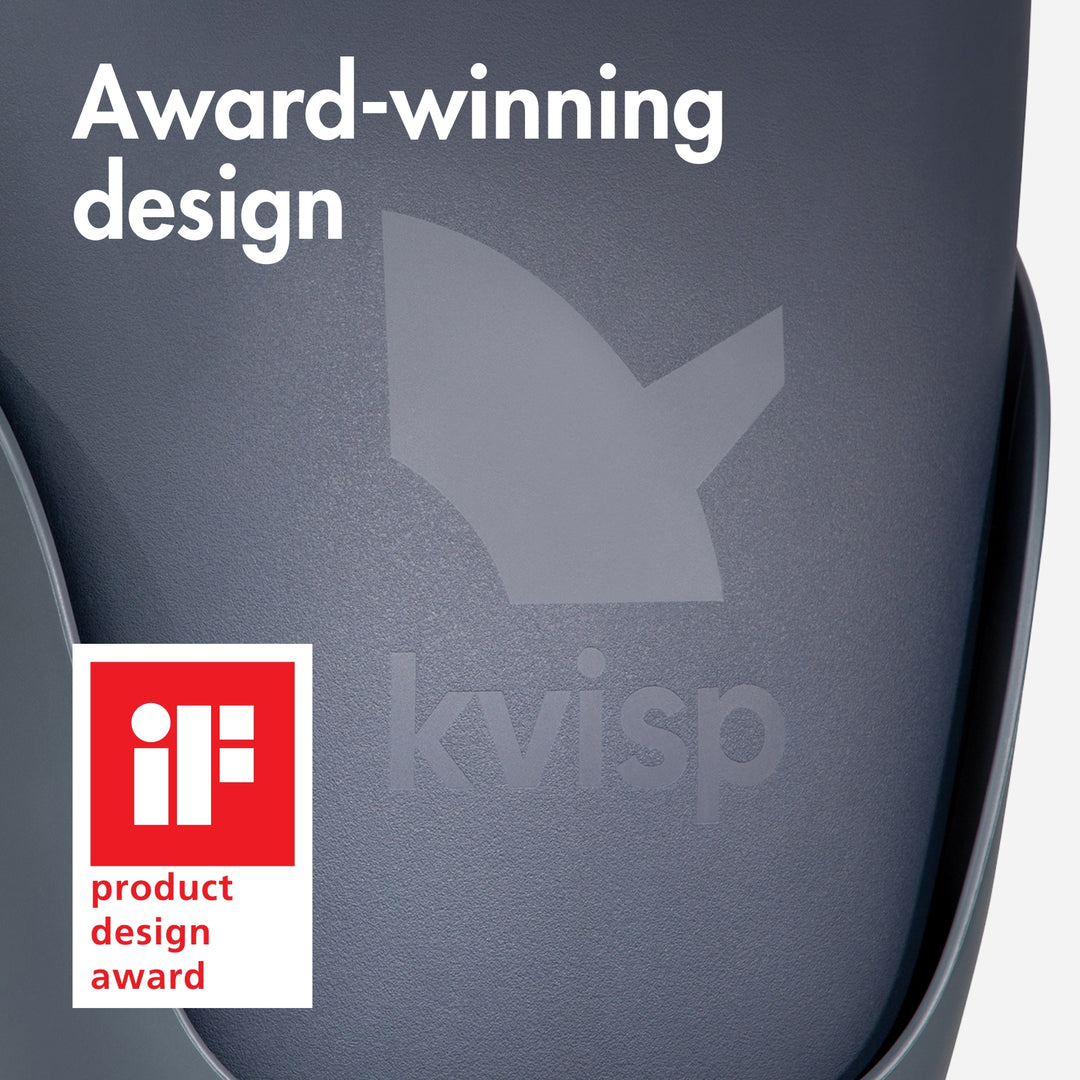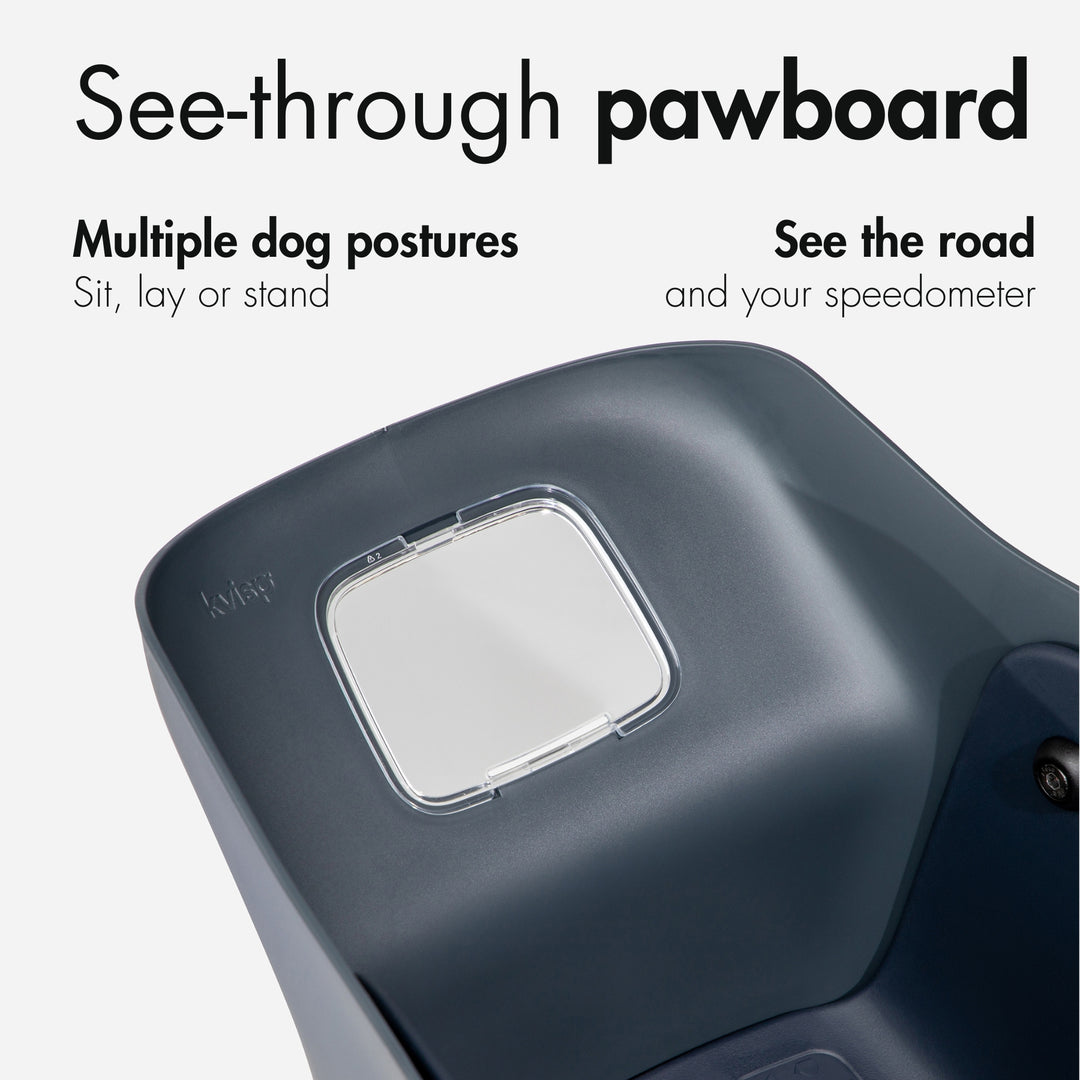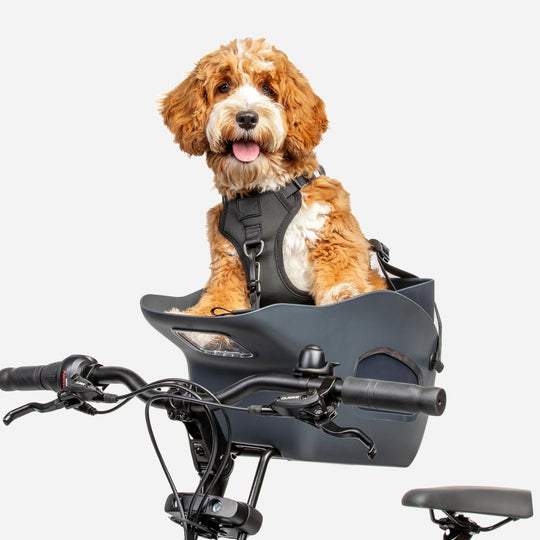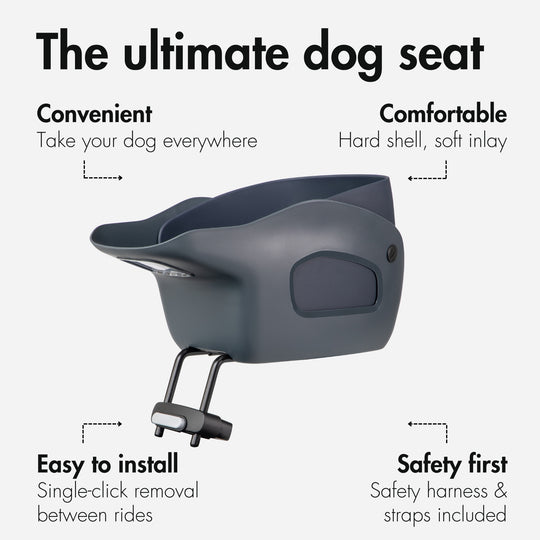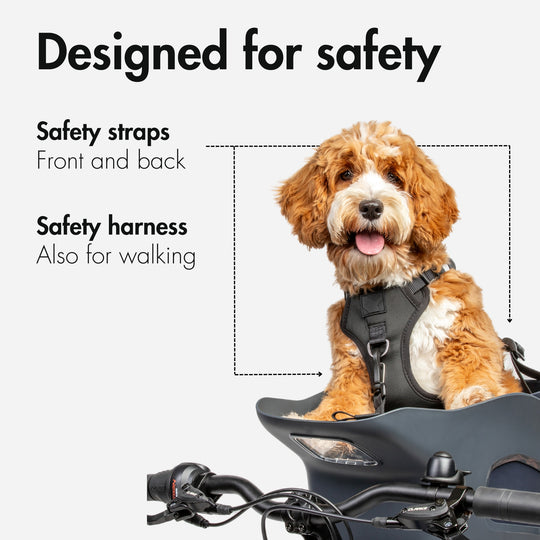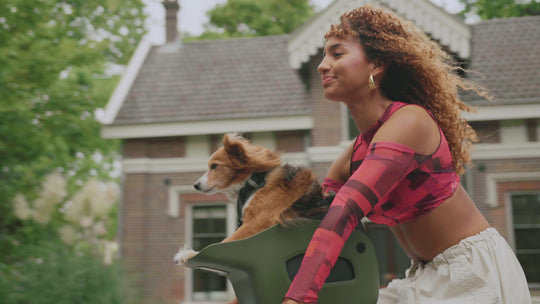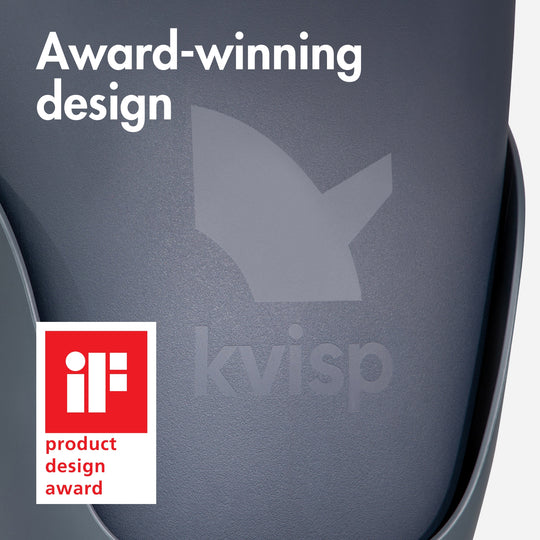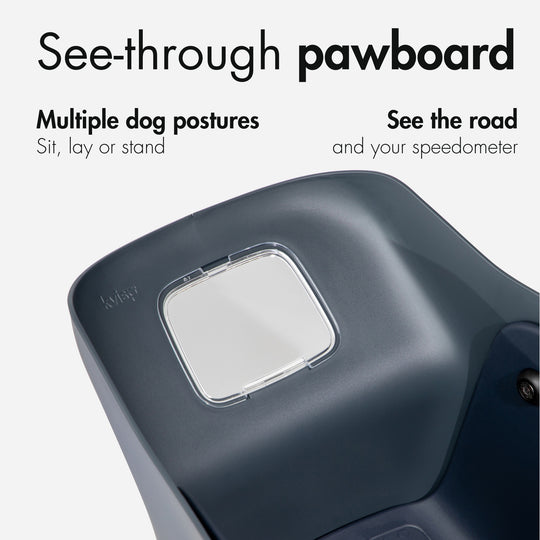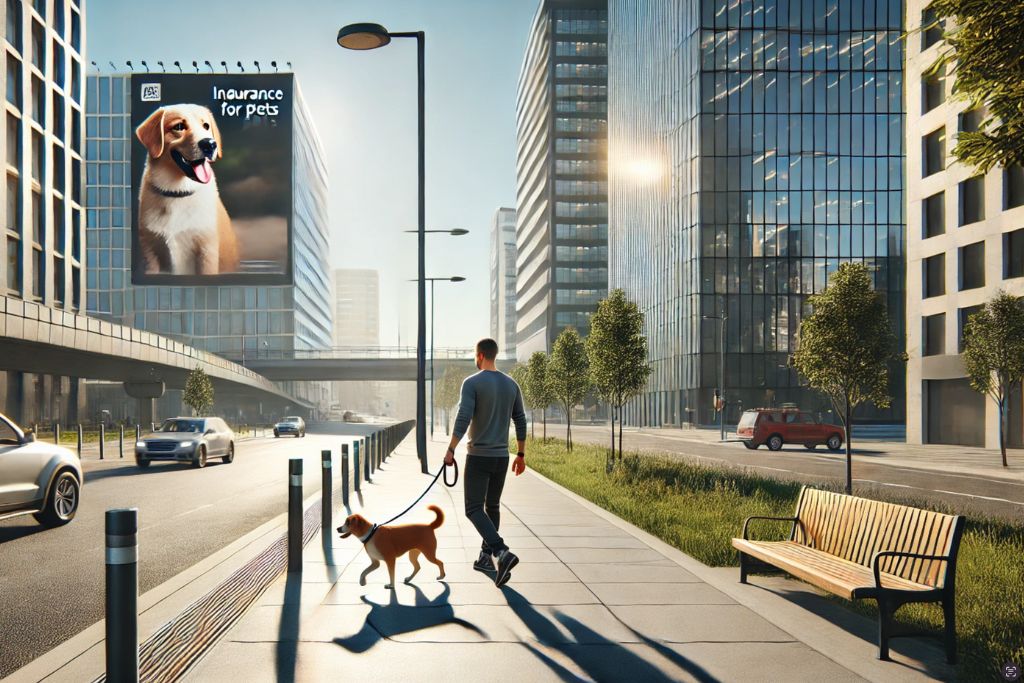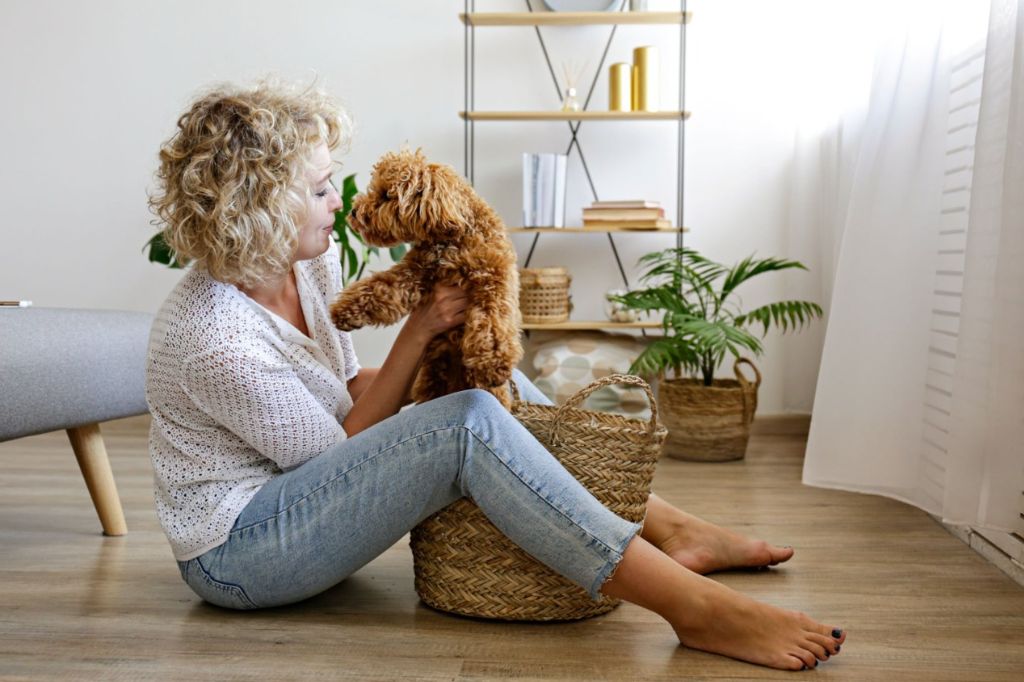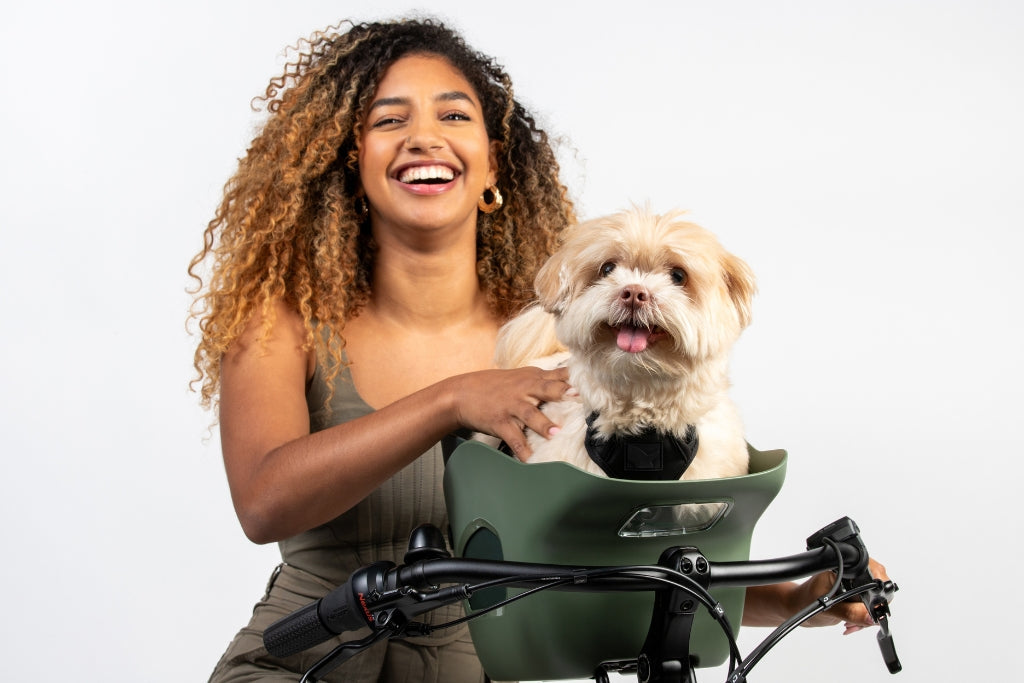How Different Dog Breeds React to Riding in a Bike Carrier
If you've ever tried taking a dog for a bike ride, you’ve probably noticed that not all dogs react the same way. Some immediately settle in, enjoying the breeze, while others squirm, bark, or even try to jump out! That’s because every breed has its own unique temperament and comfort level with movement, confinement, and new experiences. Understanding breed-specific behavior can make all the difference when introducing your pup to a dog carrier for a bike.

Some dogs, particularly those bred for companionship, love being close to their humans and will happily relax in a small dog bicycle carrier. Others, especially working breeds, might feel restricted and struggle with staying still. And then there are the cautious pups who need extra time and reassurance before they feel at ease. Knowing where your dog falls on this spectrum will help you create a smooth, stress-free biking experience for both of you!
Small Breeds: The Confident Travelers
Small dogs tend to love being carried, which makes them great candidates for bike rides. Many toy breeds, like Chihuahuas, Maltese, and Pomeranians, thrive on attention and closeness, so a puppy bike carrier can feel like a cozy little den rather than a scary enclosure. Their lightweight bodies make them easy to transport, and they rarely pose a challenge in terms of weight limits. Plus, they get cold easily, so they may even enjoy the warmth of being nestled into a well-padded carrier.
However, small breeds can also be prone to anxiety, especially if they’re not used to new environments or sudden movements. If your pup gets nervous, try these tips:
👉 Start Slow: Place them in the carrier indoors first, rewarding calm behavior with treats.
👉 Choose the Right Fit: A secure and well-ventilated small dog bicycle carrier will keep them comfortable and prevent wiggling.
👉 Watch for Overstimulation: Small dogs can get overwhelmed by too much noise and motion, so keep an eye on their body language.
👉 Keep Rides Short at First: A few minutes around the block is plenty for their first outing!
Once they get the hang of it, these little guys often become biking pros, sitting contentedly in their carrier while enjoying the view. If you’re lucky, you might even get a happy tail wag mid-ride!
Medium Breeds: Curious Yet Cautious
Medium-sized dogs, such as French Bulldogs, Cocker Spaniels, and Miniature Schnauzers, often show a mix of curiosity and hesitation when introduced to a cycling dog carrier. Unlike toy breeds that love being carried, these pups are often independent enough to be wary of being confined in a small space. The good news? With the right training, they can adapt beautifully to bike rides.
The key is making sure they feel safe and supported:
✅ A Sturdy Base is a Must: Medium breeds need a carrier that provides excellent stability to prevent shifting or tipping.
✅ Gradual Exposure Works Best: Before even attaching the carrier to your bike, get your dog used to sitting in it at home.
✅ Consider a Front-Mounted Carrier: Many medium-sized breeds feel more secure when they can see their owners rather than being tucked away in the back.
✅ Use a Safety Leash: Some medium dogs are escape artists! A secure harness attachment can keep them from hopping out unexpectedly.
If you have a dog in this size range, patience is key. Some will take to it right away, while others might need more encouragement before fully relaxing. But once they do? Expect plenty of happy, curious glances as they take in the world from their comfy new ride!
Large Breeds: The Gentle Giants Who Prefer Stability
For those with large dogs, a standard dog carrier for a bike just isn’t going to cut it. Breeds like Labradors, Golden Retrievers, and German Shepherds are simply too big for most front-mounted or rear carriers. Instead, bike trailers designed for dogs are often the best alternative, offering plenty of room and stability for these gentle giants.
If you’re considering taking a larger dog on a bike ride, here’s what you need to keep in mind:
👉 Weight Distribution is Crucial: Large breeds need a well-balanced trailer to avoid tipping.
👉 Secure the Entrance: Some dogs get excited and might try to jump out—look for a model with a zippered, secure closure.
👉 Make Sure They Can Lie Down Comfortably: Large dogs will appreciate a carrier where they can stretch out rather than being forced to sit upright.
👉 Take Extra Time Introducing Them: Big dogs can be skeptical of new experiences, so let them explore the trailer at their own pace before the first ride.
While they may not fit in a traditional bike carrier, large dogs can still enjoy the experience of a ride—just with a bit more space! Watching a big pup lounge comfortably in a bike trailer, ears flapping in the wind, is a sight that never gets old.
Active and Energetic Breeds: Thrill-Seekers or Overstimulated?
High-energy dogs, like Border Collies, Jack Russell Terriers, and Australian Shepherds, love an adventure. These breeds thrive on stimulation, which makes biking an exciting activity for them. However, their enthusiasm can be a double-edged sword. While they may enjoy the motion and sights, they might also struggle with sitting still for extended periods.
👉 To set an energetic pup up for success:
✔️ Burn Off Excess Energy First: A quick play session before a ride can help them settle down.
✔️ Pick a Carrier with Secure Fastenings: These dogs tend to be fidgety, so a well-constructed carrier with strong straps and buckles is a must.
✔️ Engage Their Senses: A few treats, a favorite toy, or even a blanket with your scent can help them feel at home.
✔️ Give Frequent Breaks: Some energetic breeds prefer to stretch their legs, so consider combining bike rides with off-leash play stops.
With a bit of preparation, high-energy breeds can learn to enjoy the ride instead of seeing it as a challenge to break free!

Anxious and Nervous Breeds: Slow and Steady Wins the Ride
Some dogs, especially rescue pups or naturally cautious breeds like Whippets and Italian Greyhounds, might find the idea of riding in a bike carrier downright terrifying at first. Sudden movements, unfamiliar sounds, and the sensation of being lifted off the ground can be overwhelming. But don’t worry—most anxious dogs can be taught to feel comfortable in a carrier with time and patience.
👉 For nervous dogs, try these calming techniques:
✔️ Start in a Familiar Environment: Let them sit in the carrier indoors before introducing movement.
✔️ Use Gentle, Reassuring Encouragement: A soothing voice and slow, deliberate movements go a long way.
✔️ Avoid High-Traffic Areas at First: Quiet, peaceful routes will help prevent sensory overload.
✔️ Watch Their Body Language: If your dog is trembling or constantly trying to escape, give them more time before attempting a full ride.
These pups may take longer to adjust, but once they do, they can become some of the most relaxed bike-riding companions. The key is consistency, positive reinforcement, and letting them move at their own pace.
Brachycephalic Breeds: Special Considerations for Flat-Faced Dogs
Flat-faced (brachycephalic) breeds like Pugs, Bulldogs, and Shih Tzus have unique needs when it comes to riding in a dog carrier for a bike. Because of their short snouts, they often have trouble regulating their breathing, especially in warm weather. That means ventilation isn’t just a nice feature in a dog carrier for cycling—it’s absolutely essential! Without proper airflow, these breeds can quickly become overheated or uncomfortable.
To keep a flat-faced pup safe and happy in a small dog bicycle carrier, here’s what to keep in mind:
👉 Choose a Carrier with Maximum Ventilation: Mesh sides, open tops, or airflow panels are key.
👉 Avoid Riding in Extreme Heat: Pugs and Bulldogs overheat easily, so early morning or evening rides are best.
👉 Monitor for Breathing Issues: If your dog seems to be struggling to breathe, it’s time for a break.
👉 Pick a Carrier with a Stable Base: Because these breeds often have stocky builds, they need a supportive, well-balanced space to sit comfortably.
While brachycephalic breeds may need extra attention, they can still love bike rides just as much as any other dog! Just be sure to watch for signs of discomfort and adjust the ride accordingly.
How Early Training Makes a Difference
The earlier a dog gets used to riding in a puppy bike carrier, the easier it is for them to embrace the experience. Puppies are naturally adaptable, and when introduced properly, they tend to see a small dog bicycle carrier as just another fun place to be. On the flip side, older dogs who have never been in a carrier may need extra time to adjust.
If you’re working with a puppy or a young dog, here’s how to make the transition smooth:
➡️ Let Them Explore the Carrier First: Leave it open on the floor and allow them to sniff and climb inside at their own pace.
➡️ Make It a Positive Experience: Toss in a few treats or a favorite toy to encourage them to hop in.
➡️ Start with Short, Stationary Sessions: Before hitting the road, let them sit inside the carrier while you gently rock it back and forth.
➡️ Keep Early Rides Slow and Easy: Stick to smooth, quiet paths at first to avoid overwhelming them.
By building positive associations early on, your pup will be far more likely to enjoy biking with you as they grow!
👉 Related: How to Train Your Dog to Ride in a Bike Basket Safely
Choosing the Right Bike Carrier for a Comfortable Ride
Not all dog carriers are designed with the same level of comfort, and picking the right one can make or break your biking experience. The last thing you want is a carrier that’s unstable, poorly ventilated, or too small for your dog to sit comfortably. When choosing a dog bike carrier, it’s important to consider not just the size, but also features that enhance your dog’s safety and security.
👉 Key Features to Look For:
✅ Stability & Security: A wobbly carrier will make dogs nervous. Look for sturdy attachments and a solid base.
✅ Ventilation: Mesh panels or breathable fabric prevent overheating.
✅ Comfort: A padded interior helps reduce pressure points, making longer rides enjoyable.
✅ Safety Straps & Harness Attachments: These prevent sudden escapes if your pup gets spooked.
A good dog carrier for a bike should feel like a second home for your dog—safe, cozy, and inviting!

Why the Right Carrier Makes All the Difference
A poorly designed dog carrier can turn an exciting ride into a stressful ordeal. Some carriers shift too much, lack proper support, or don’t provide the security needed for anxious or active dogs. That’s why choosing a high-quality option is worth it—not just for convenience, but for your dog’s happiness and safety.
One carrier that consistently gets high marks is the Kvisp Dog Bike Carrier. It’s designed with dogs' comfort in mind, featuring a stable base, secure harness attachments, and breathable fabric to keep your pup relaxed. Whether you have an adventurous pup who loves the ride or a more hesitant dog who needs extra reassurance, the right carrier can make all the difference.
Curious about what other dog owners think? Many have shared their experiences, detailing how their dogs took to the Kvisp Dog Bike Carrier—some instantly, others after a little training, but nearly all with a positive outcome. It's always helpful to hear from fellow dog lovers before making a decision!
Tips for a Smooth and Enjoyable Ride
Once you’ve chosen the right carrier, it’s time to focus on making the ride as enjoyable as possible for your pup. The goal is to ensure they feel safe, comfortable, and excited for every adventure!
✅ Introduce the Carrier Gradually: Let your dog sniff and sit in it before taking it on the bike.
✅ Keep Initial Rides Short: Start with a few slow loops around the neighborhood before venturing further.
✅ Watch for Signs of Discomfort: If your dog seems restless or nervous, take a break and reassure them.
✅ Bring the Essentials: A small water bowl, a few treats, and a familiar blanket can make a big difference in keeping your dog relaxed.
With patience and practice, riding together will become second nature—just another way to enjoy time outdoors with your furry best friend!
The Joy of Exploring Together
Once your dog is comfortable in their dog carrier, a whole new world of adventure opens up. Whether you’re cruising through a park, running errands, or just enjoying a scenic ride, bringing your pup along makes everything more fun. Every breed, from tiny Chihuahuas to energetic Terriers, can learn to love the experience—especially when they have a carrier that makes them feel secure.
At the end of the day, biking with your dog isn’t just about convenience; it’s about sharing moments together. Seeing your pup’s ears perk up at new sights, feeling their warm body nestled into their carrier, and knowing they trust you enough to relax—it’s the kind of bonding experience that makes every ride worthwhile.




